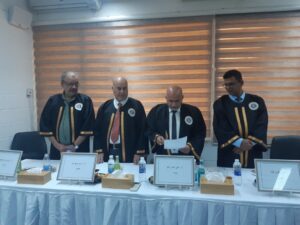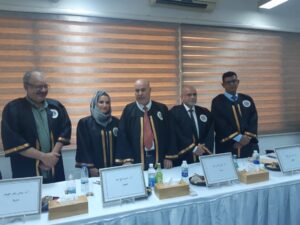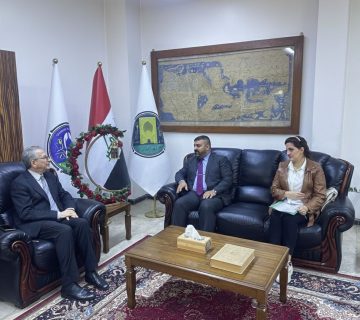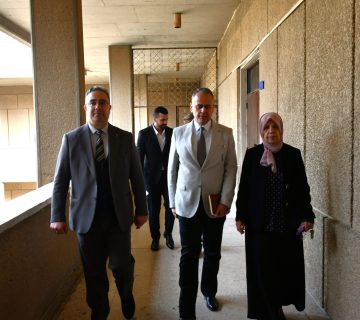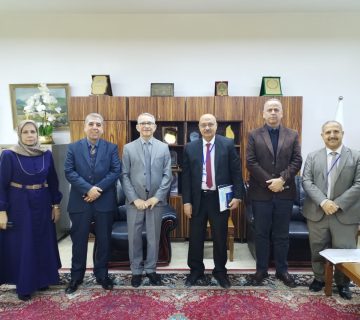A Thesis discussion was held on Tuesday 4-7-2023 in Prof. Dr. Najeeb Kharufa Hall. This thesis was presented by student (Safa Hayder Badr Mohi) and titled as:
“The Impact of Using Large Scale Geometric Roughness Elements in Controlling Propagation of Salt Wedge”
After discussing the student, listening to his defense, and evaluating the level of the thesis, the student was granted a master’s degree in Water Resources Engineering – Water Resources. With Excellent Degree
The discussion committee was consisted by the following:
Prof. Dr. Ali Nasser Hilo (The Dean of Engineering College/ Wasit University) Chairman
Prof. Dr. Basim Sh. Abd. ————————————— Membership
Asst. Prof. Dr. Haider Qaies Majeed ——————————– Membership
Prof. Dr. Riyadh Z. Azzubaidi. ————————————— Supervisor
The Thesis Abstract as : –
This study aims to simulate and control the propagation of salt wedge by using Computational Fluid Dynamics, CFD in a flume. The simulated model is used to investigate the use of inclined roughness elements to control the propagation of salt wedges. The elements are blocks of 2cm by 3cm cross-sections having an inclined face in the direction of the flow. These elements were installed in two rows at both sides of the bed of the flume with variable spacing between them in the direction of the flow. The simulation model was validated by comparing its output with a published laboratory experiment. The result showed that all of the model results showed that the roughness elements can greatly reduce the propagation of salt wedge upstream of the river mouth.
The Main Objectives for this Thesis are:
- Develop a three-dimensional model by using CFD software to estimate the propagation of the salt wedge and control by using roughness elements.
- Performing investigations by using the developed model on the impact of using of different geometry and configuration of roughness elements on the control of the propagation of salt wedge.
Recommendations:
- Investigating how the presence of tidal currents influences the propagation of salt wedge.
- Verifying the use of CFD model by field observations of the propagation of salt wedge.
- Investigating the effect of using large-scale geometric roughness elements with a variety of configurations and shapes in order to control the propagation of salt wedge efficiently.

